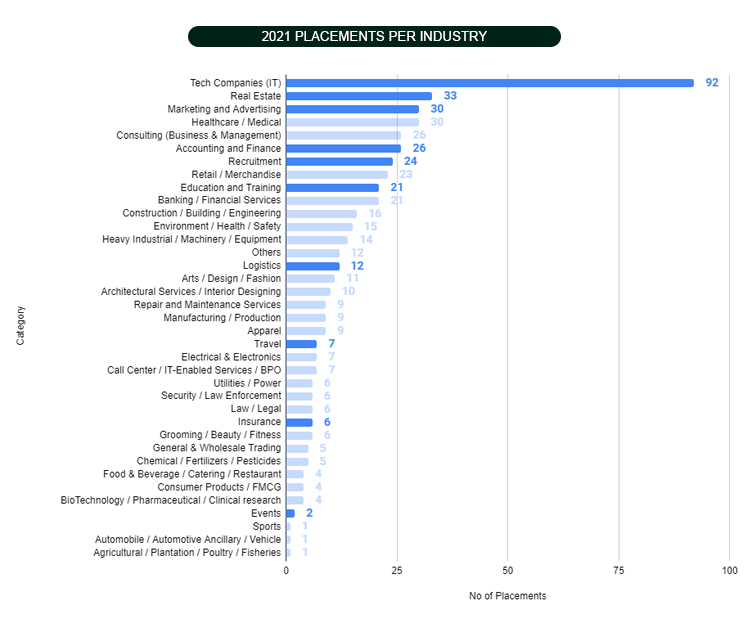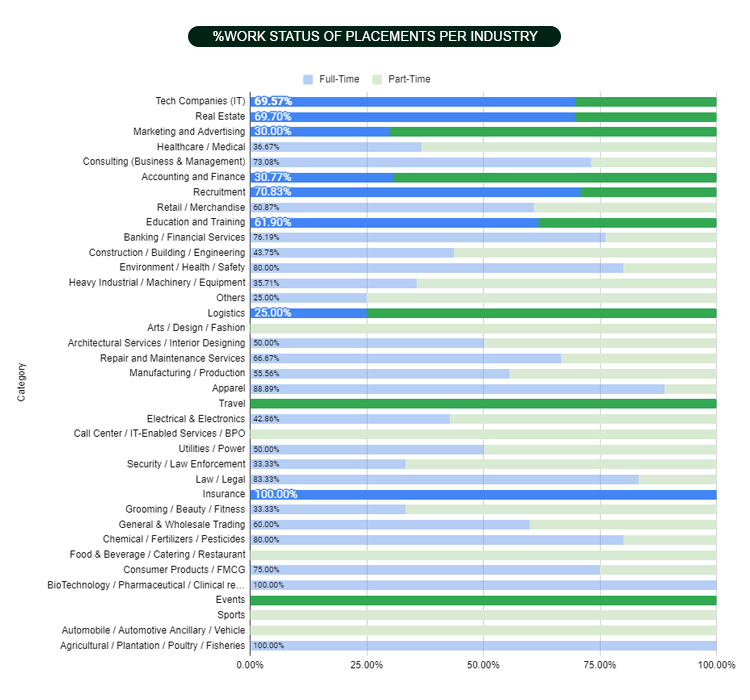Introduction.
One of the definite upsides of the global pandemic is the sudden growth and increase in popularity of remote working. And with this comes an increasing need for the services of Information and Communications Technology (ICT) and Computer and Software Retail Companies.
These companies offer a wide variety of vital services for their clients. These services range from developing mobile applications to managing databases and company social media accounts. Aside from these fields, tech companies also serve an essential role in healthcare, education, and the digital economy.


The necessity of shifting to a remote work setup during the pandemic has accelerated the growth and spending in the tech industry. According to Gartner, the prediction for spending in computer and software retailing for 2022 is 109 Billion AUD from 2021’s 102 Billion AUD. In addition, their projected market growth for this year is 6.5%, which went up from 2021’s 5.9%.
Despite its impressive growth, there are still many areas where the tech industry can improve. Fortunately, outsourcing jobs has opened new ways to improve your business’ success.
Challenges Faced by Australian Tech Companies.
As I alluded to earlier, Australian Tech Companies also face several challenges for their success. These challenges can keep them from fully taking advantage of the new developments in this sector. These are:

Declining Life Cycle Stage.
One of the primary challenges faced by Australian Computer and IT companies is their businesses are entering the decline stage. This stage is where a business’s sales and profits begin to fall. Two factors determine the rate a company enters this stage: how fast consumers’ tastes change and how fast the introduction of new products in the market is.
Due to rapid developments in technology today, it is getting harder for tech companies to keep up with these changes and innovate. Additionally, customers are more likely to purchase up to date computers than old ones, for obvious reasons. After all, who would buy older model computers or laptops when new ones exist?
Because of these factors, existing Australian tech companies are struggling to innovate and keep up with market demands. The declining life cycle stage of the tech industry also makes it difficult for new companies to enter the market.

Stiff Competition Amongst Companies.
Another primary challenge that Australian tech companies face today is stiff competition. Because of the growing demand for tech services and products, many companies are entering this industry to take advantage of this demand. This increase in competition leads to companies changing their business models to adapt and thrive.
Unfortunately, not all tech companies can adapt to these changes and remain competitive today. New companies are having difficulty establishing their brands and finding their market niche. On the other hand, Older companies are struggling to maintain their brand and keep their market niche in the face of many competitors.

Acquiring Skilled Employees.
Connected to the previous two challenges is the competition to get skilled employees. As tech companies adopt new business models, technologies, and other measures to remain competitive, they’ll need competent and experienced employees. Because of this, there is an ongoing “talent war” as companies seek to hire the best employees today.
This talent war happens because there aren’t enough skilled applicants applying for the tech companies’ vacancies. Without new applicants, companies risk stagnating as there are no fresh ideas to help push the company forward.

Data Security, Management, and Privacy.
In today’s digital age, data security and privacy are some of the primary concerns for tech companies. This concern comes from the fact that companies store most, if not all, of their data via cloud. This setup makes your data very vulnerable to hackers and other cyber threats.
Having a data security breach in your track record will make potential customers wary of trusting your services and forever tarnish your company’s reputation. So if you want to avoid any issues, having excellent data security, management, and privacy setup is a must.

Remote Work as a Solution to These Challenges.
Fortunately, despite these challenges, the advent of remote work has opened new opportunities for Australian tech companies. In fact, big companies such as Apple, Google, and Microsoft have announced that their current hybrid setup is here to stay. Not only is a remote/hybrid work setup more flexible than a traditional one, but it improves worker productivity as well.
An example of how remote work can help your business through helping you acquire more skilled employees. Because remote workers don’t need to work in an office, your available talent pool is potentially cheaper and goes beyond Australia. And one of the best countries to outsource work to is the Philippines.

How Remote Staff Can Help Tech Companies.
For more than a decade, Remote Staff has helped Australian tech companies find the perfect remote worker for their needs. Tech companies that have contracted us since last year have outsourced the following jobs to Filipino remote workers:

Web Developers.
- Write well-designed, testable, and efficient code using the best software development practices.
- Create website layout and user interfaces using standard HTML/CSS practices.
- Integrate data from various back-end services and databases.
- Gather and then refine specifications and requirements based on technical needs.
- Maintain, expand, and scale your client’s website.
- Coordinate with the web designers to match your client’s visual design intent.

PHP Developers.
- Write clean, functional, effective, and scalable PHP codes.
- Build and edit efficient, testable, and reusable PHP modules.
- Solve complex performance and architectural challenges.
- Integrate user-facing elements developed by front-end developers.
- Assimilate data storage solutions.

Front-End Developers.
- Ensure optimized UI/UX design.
- Collaborate with back-end developers about the website’s features.
- Develop engaging user interfaces.
- Integrate the website’s design alongside the best SEO practices.
- Develop website codes for campaigns.
- Optimize the website for speed and scalability.
- Implement designs for mobile sites.
- Fix usability issues and bugs.

Software Developers.
- Proficient in systems and applications development.
- Familiar with many development tools, programming languages, and methodologies.
- Excellent understanding of coding methods.
- Able to research software-related issues and products.
- Good analytical and problem-solving skills.
- Capable of troubleshooting problems specific to their area of expertise.

Virtual Assistants.
- Manage filing systems, update records, and organize documentation.
- Answer and direct your client’s phone calls.
- Answer emails.
- Prepare and organize databases and reports.
- Organize meetings, travels, and accommodations for your client.
- Manage your client’s contact lists and organize their client’s calendars.

Lead Generation Specialists.
- Maintain the integrity of the company’s client database, ensuring that the data is accurate, current, and consistent.
- Research on specific information regarding prospective clients.
- Proficient in database navigation and data mining.
- Able to complete any missing information (Name, Contact information, Address, etc.) in your database through research.
- Put together and summarize data via excel or Google sheets.
- Collaborate with the sales team to manage sales and marketing campaigns, including follow-up calls and setting up appointments.

Technical Support Specialists.
- Act as the initial point of contact for all technical or system-related concerns from clients or users.
- Handle technical support concerns via phone and email submission.
- Maintain a working log detailing all the required system updates, as well as their date of completion.
- Assist in the creation of training materials for system troubleshooting and usage.

Junior Data Analysts.
- Interpret and analyze data using statistical techniques.
- Develop and implement data analyses, collection systems, and other strategies that optimize statistical efficiency and quality.
- Acquire data from either primary or secondary sources and maintain your client’s database.
- Identify, analyze, and interpret trends or patterns in complex data sets.
- Convert raw data into dynamic dashboards, tables, etc.
- Collaborate with the management team to prioritize business and information needs.
- Locate and define new process improvement opportunities.
- Make sure that all deliverables are on time for their submission.
- Responsible for ensuring that all data and information are kept confidential at all times.

Remote Work in the IT Industry: What Our Numbers Are Saying.
All these statements sound impressive on paper, but without concrete proof to back them up, these statements doesn’t mean anything. Fortunately, we have the evidence to support our claims and show the increasing demand for remote work in the IT industry.

When we analyze the numbers of our lead acquisitions from 2016 to 2021, we can see that the IT industry has consistently been the top industry that showed interest in remote work.
In addition, we can see that there was an increase in lead acquisitions for the IT industry during 2018-2019. It dropped slightly in 2020, but rose again in 2021 because of the pandemic.

Getting inquiries about our services is one thing; actually hiring remote contractors is another. As you can see from these graphs, The IT industry has tallied 92 placements during 2021, the highest of any industry that year.

Of these 92 contractors, 64 (69.67%) are full-time workers, while 28 (30.43%) are only part-timers. This statistic shows that, contrary to what some may think, remote work is not just a temporary measure until the pandemic is over. Many companies are now seeing the benefits that remote workers; and wish for it to continue after the pandemic.
John Carlo Pagsolingan is a carefree yet hardworking writer with aspirations of becoming a teacher in the future. He believes that remote working isn’t just a substitute; but is a legitimate alternative to face-to-face work. Learn more as he writes about the advantages of remote work and tips for aspiring remote workers.
























 Zero Recruitment Fee
Zero Recruitment Fee